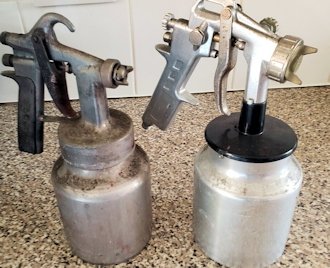Paint Settling problems

This section includes Paint Settling problems hard settling and caking.
All pigmented materials will settle. Many factors, such as type of pigment, formulation, fineness of grind, and viscosity will determine whether the pigments settle hard, soft, fast or slow.
To Repair All paint products should be stirred thoroughly each time before use. Materials which do not appear to be settled may actually contain a much higher concentration of pigment near the bottom of the container than near the top, and still be so soft that the settling cannot be detected. Thus an undercoat, if used without stirring, may give poor adhesion, hard flatting, etc. If firm or hard settling is present, the liquid portion should all be poured off into a separate clean container, and the settled
portion should be broken up and stirred thoroughly until completely smooth and free of lumps and visible particles. The liquid portion should then be poured back into the original container, very slowly at first, while continually stirring the material. After thinning, the material should be strained through a fine straining medium.
Prevention
Steps which can be taken by the paint dealer and the paint user to minimize settling are:
- Never store paint near heat. Keep in a cool place.
- Invert containers periodically.
- Use oldest stock first.
- Never store thinned paint.
- Never pour paint back into container of unthinned paint.



